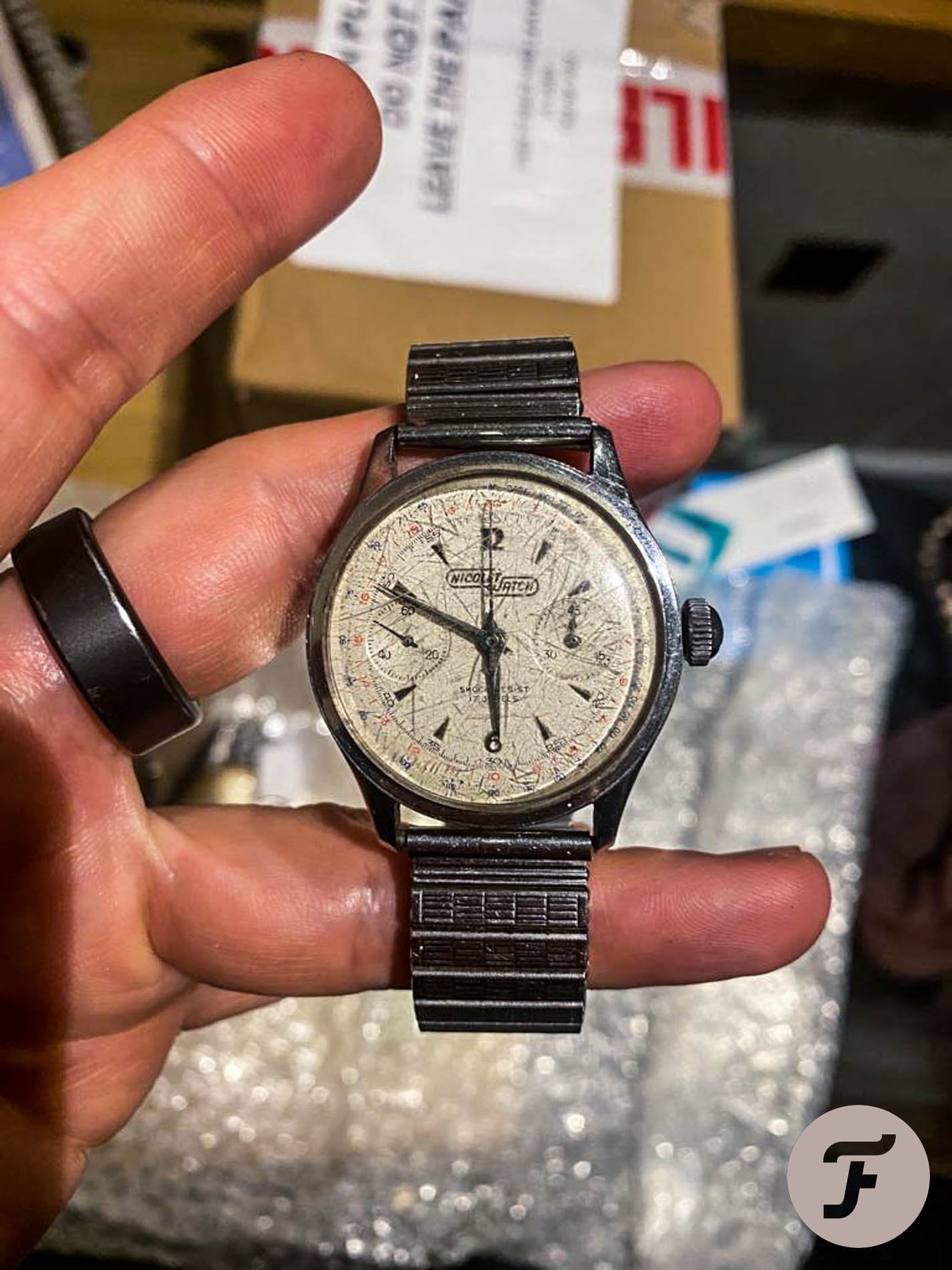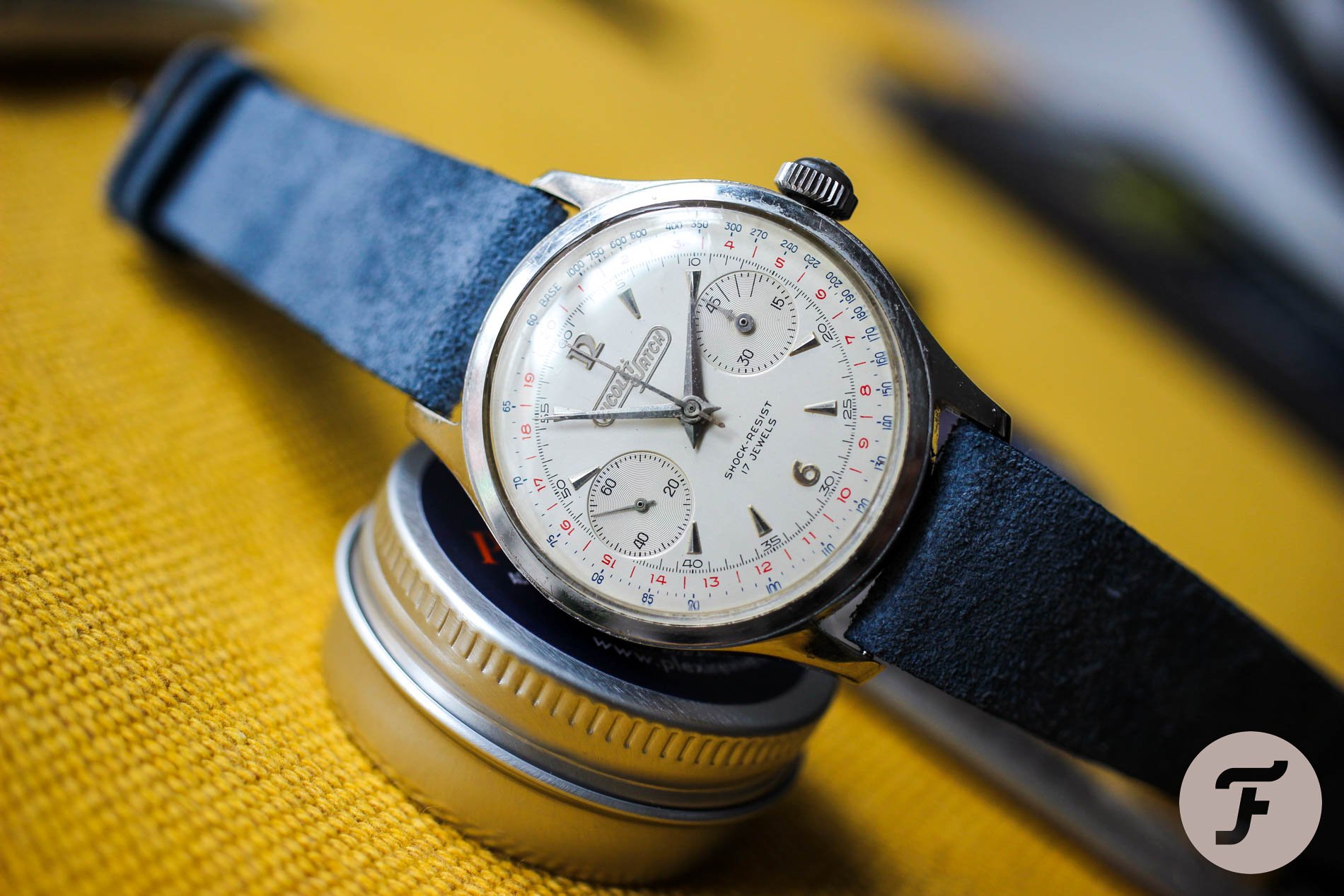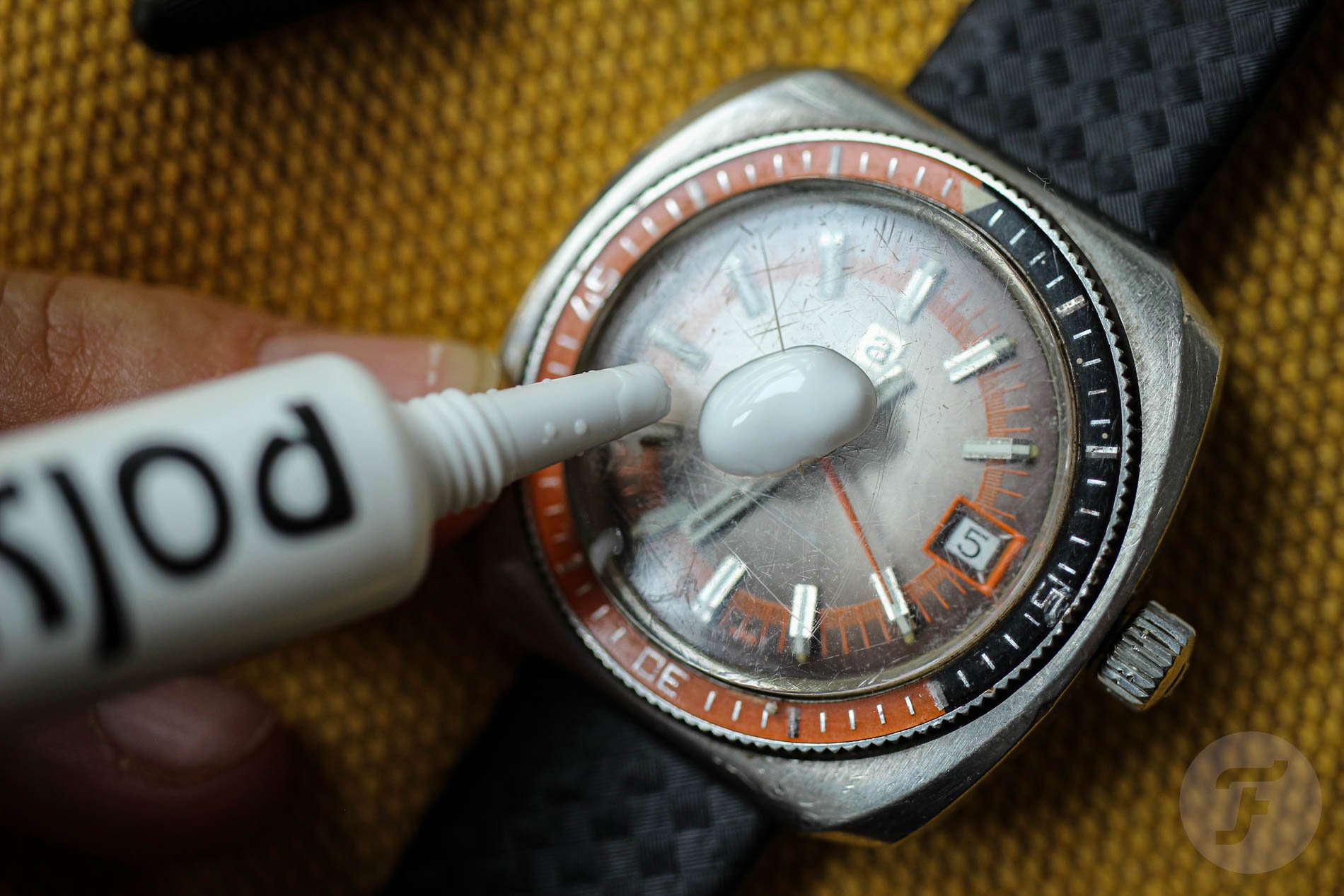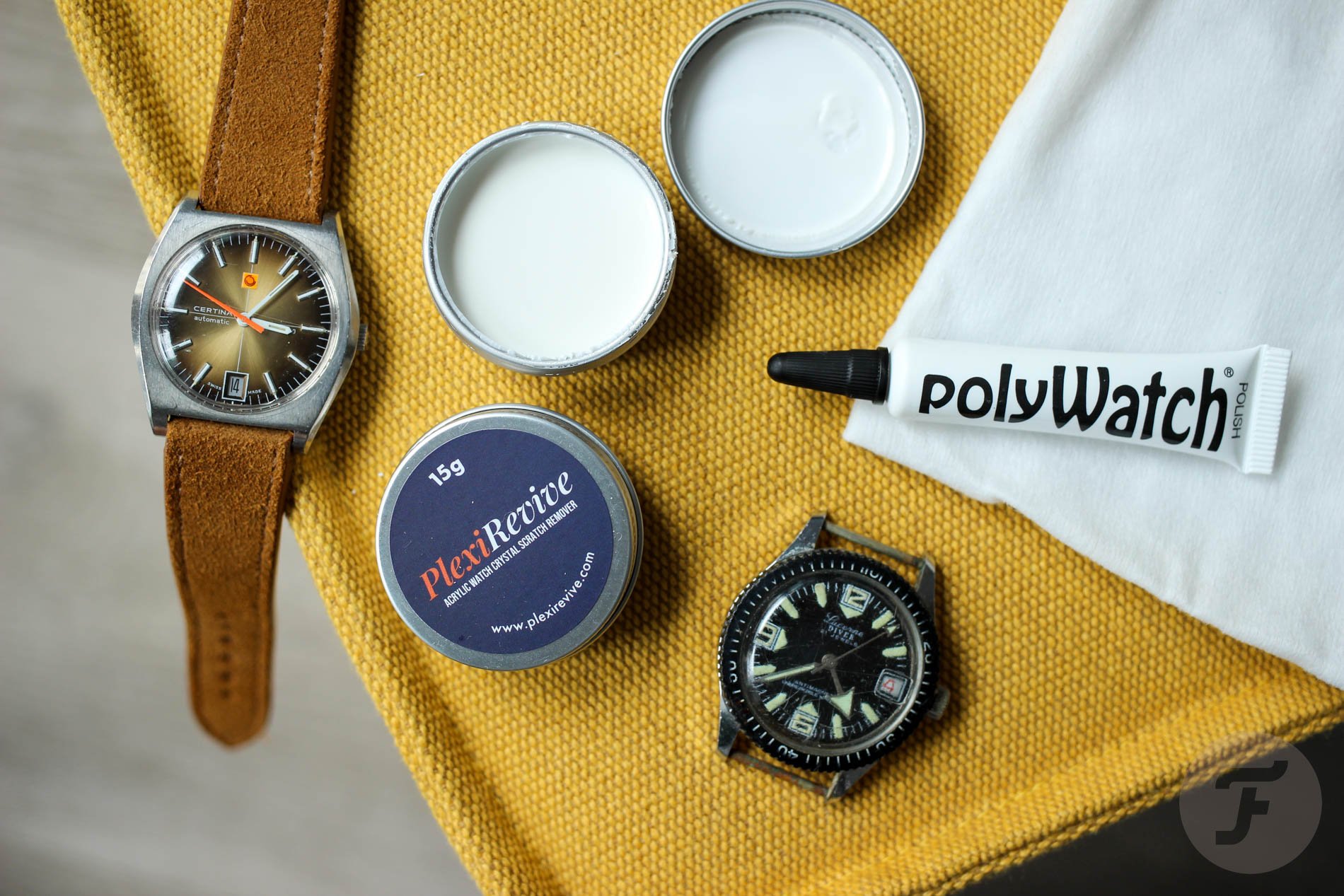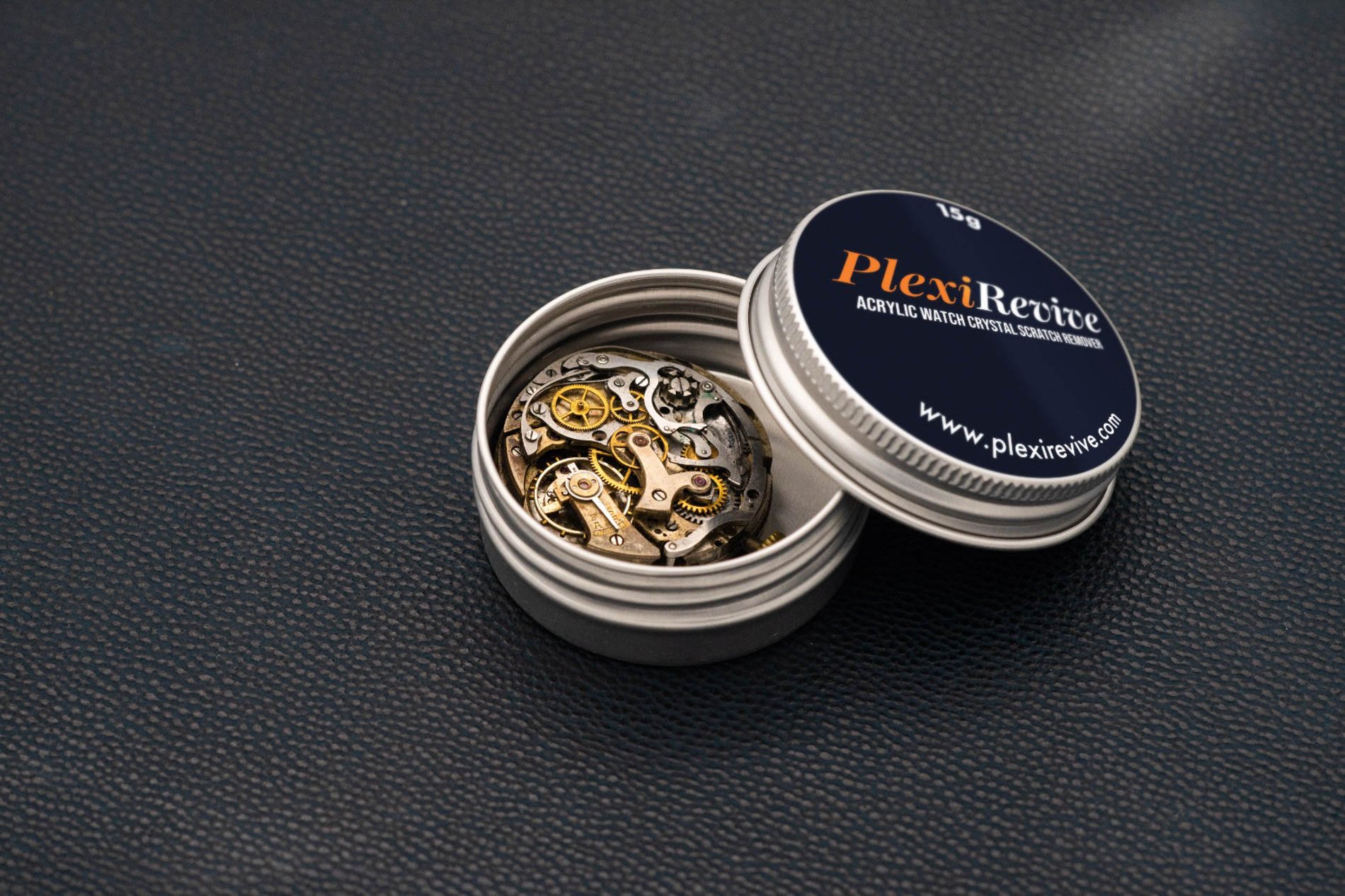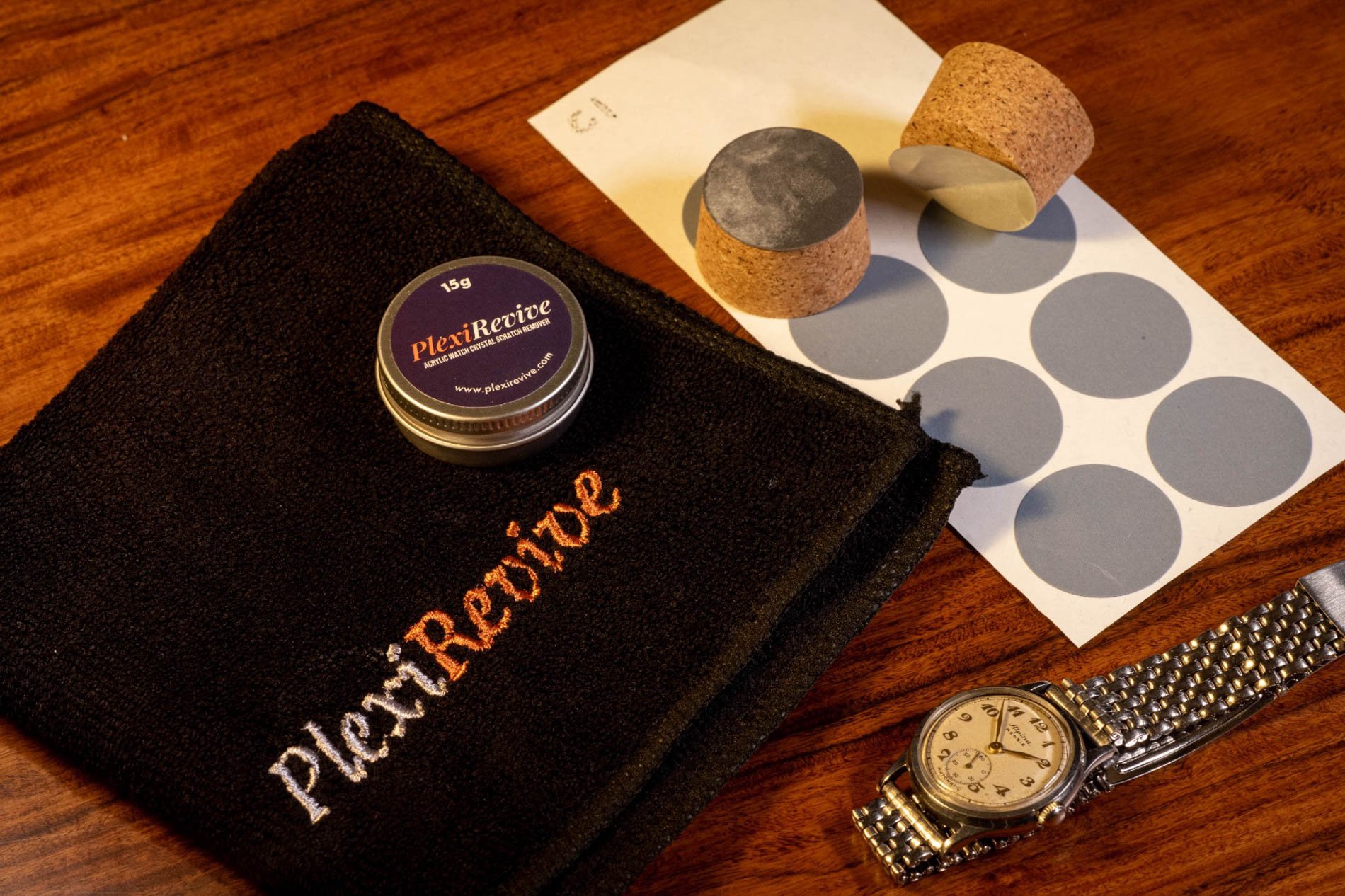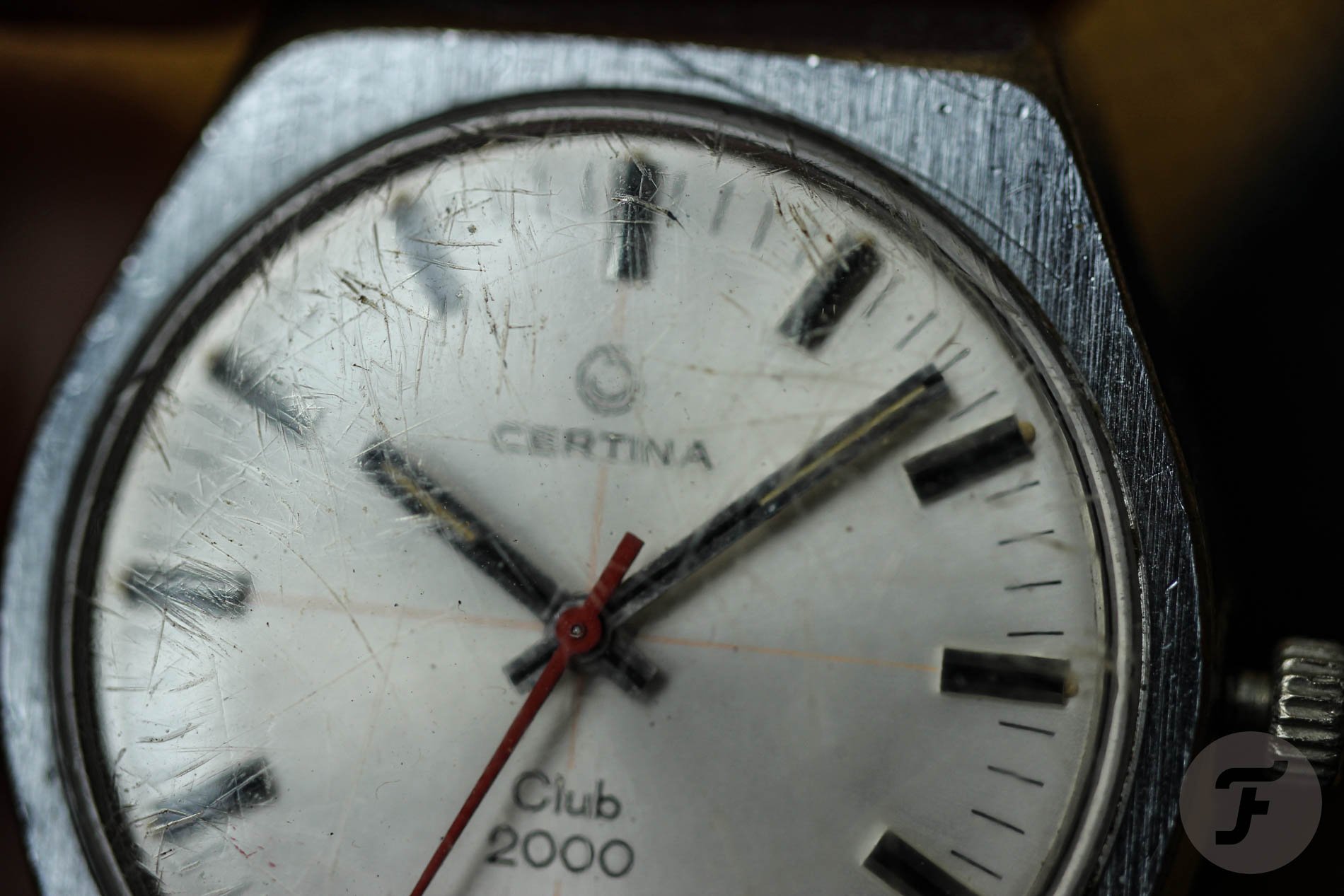#TBT A Short Pep Talk On Polishing Your Watch Crystals
OK, it’s about time to come clean: until recently, I had never polished my beaten crystals myself. The reason was simple. I was afraid I would do more harm than good. I think there are other collectors like me, those who would like to polish crystals themselves but are just a bit too afraid…
It looked simple, even though I never did it myself. I had all I needed — dozens of watches with beaten crystals, a soft cloth, and even a tube of PolyWatch, a special emulsion for scratch removal. Well, actually, I didn’t have all it needed. I didn’t have the courage to try it on my own. I watched videos, and it seemed to be no big deal. But when it came time to do it, I hesitated. It developed into a mental barrier that grew more significant each time I started to think that I might polish this or that incoming watch.
The breaking point
I bought my first scratch remover six years ago. But it took all my courage to open it only about a half year ago. Careful readers may have identified my watch-polish block when I shared the story about one of my grails, the no-pusher Nicolet chronograph. I guess I was so overwhelmed by finding it that it helped me break through my fear and just do it. I feel there may be more collectors like me, so I just wanted to speak candidly on the topic and encourage you to try it with me.
Fears
It’s easier to understand your fears after you overcome them. Looking back, I think I was primarily afraid of two things. First, I thought that I might break the crystal. On my very first attempt, I started to press very gently while polishing, but as I will describe soon, after 10 minutes, I found myself pushing against it so hard that it was my head that was going to explode, not the crystal! So, simply put, unless you’re the Hulk or you have a half-broken crystal already, you should be okay.
My second concern was that I might damage the areas around the bezel. I could not imagine that I could polish the edges of the crystal without sliding over the edges of the bezel or case. I do not have an academic answer to that concern, but it turned out all right. Obviously, I started in the middle, slowly dancing with my finger to the edges. At a certain point, you stop thinking about the edges, and you just want those silly scratches gone. Once you get more exhausted, you stop thinking about the lugs or edges at all. If you keep your finger and the pressure mostly on the Plexi, you should not be worried about polishing the beveled edges off of the lugs.
How does the polishing process work?
First, you open your scratch remover and apply it to a cotton cloth or directly to the acrylic/Plexiglass/Hesalite itself. If you have a true barn find, it’s good to take the watch off its strap and give it a light cleaning with a toothbrush first. That’s especially true if a lot of dirt has accumulated around the edge where the case hugs the crystal. Then, you start polishing by moving in even circles on the crystal. Bas from PlexiRevive recommends, “Stop polishing when the emulsion is fully worked in. This is when the cloth is making a squeaky noise or the process feels a bit rougher. With a pea-sized amount, usually one minute of fast polishing is sufficient.”
PlexiRevive vs. PolyWatch
What different scratch removers can you choose from? PolyWatch is the oldest and most famous scratch remover among collectors. There is a new product as well, the recently mentioned PlexiRevive, which was introduced earlier this year. I was determined to precisely compare the two, but the fact is that I’m probably not experienced enough to notice the difference. They work more or less the same way and produce similar results. If there is someone who has polished hundreds of Plexi crystals with them, I would be happy to hear your comparison. But from the perspective of a hobbyist user, it’s hard to differentiate.
The story behind PlexiRevive
My choice would be PlexiRevive since it is a modern product developed by a watch enthusiast for other watch enthusiasts. I do not know the production volumes, but it reminds me of microbrands in watches. Bas Kuiper, the founder of PlexiRevive, wanted to make a better product, so he jumped on it. “I came up with the product out of personal frustration. I love to preserve my barn-find watches as much as possible, so I’d rather revive the crystal than replace it. And for crystal polish, I used all the options found on the internet — toothpaste, car polish, PolyWatch — but always hoped to find something better.”
In other available solutions, Bas discovered hazardous materials like silicones and fillers, which he wanted to get rid of. Also, if you are a more “planet-conscious” type, PlexiRevive comes in tin boxes that you can use to store watch parts or whatever else. PolyWatch, once fully used, becomes an empty plastic tube. PlexiRevive took about one year to develop, and it’s produced in Germany.
Price comparison
“It’s not some extreme innovation that blows everything away. It’s the price, amount, and firmer emulsion that I like more. Plus, the compound is eco-friendly, and the package is reusable,” explains Bas when asked about the direct competition. When we look at the price, you pay about €6 for 5g of PolyWatch, while with PlexiRevive, you get 15g for €12. On the other hand, there is a special cloth in the PolyWatch kit. But stay tuned to PlexiRevive; there is a special kit in development. It will be introduced in January 2024. In the teaser photo above, we can see not only a special polishing cloth but also small adhesive sanding pads that you can stick to a piece of cork. Interesting!
Deep scratches
This little detail brings me to the biggest frustration when using scratch removers — the seemingly never-ending polishing necessary to remove deep scratches. You do it for so long that you use half of the emulsion and pass out from fatigue. Using sanding pads is a great idea, promising faster and more efficient removals. We shall see after the product hits the market.
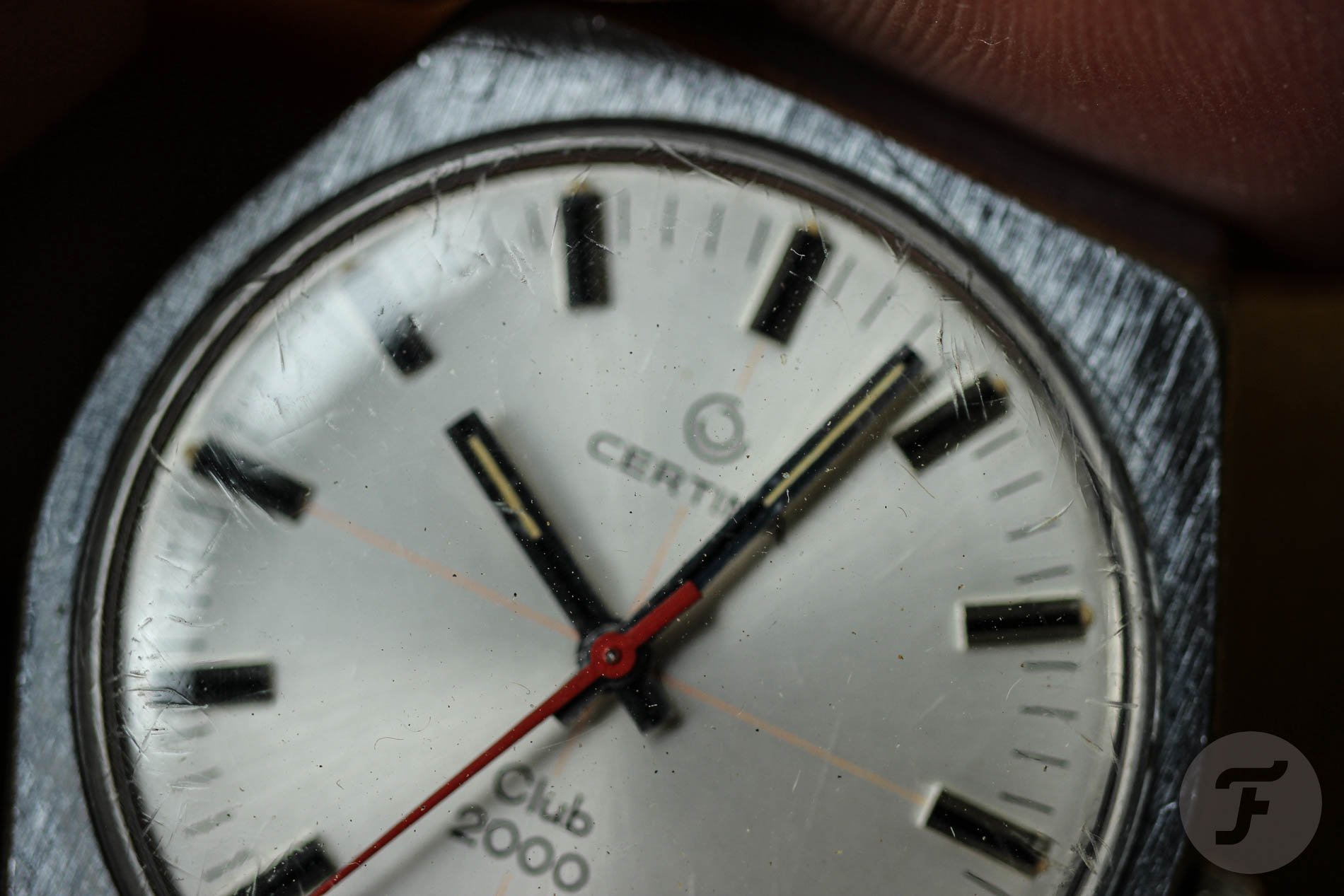
Plexi after 10 minutes of polishing. Getting rid of deep scratches around the edges is not easy and takes time.
Last thoughts
No matter what scratch remover you buy, you just need to do one thing: follow through with the job. Do not take every single watch and run off to ask your watchmaker to do the job for you. The process is a bit tiresome, but the result is satisfactory. And don’t forget the feeling you get after doing it by yourself. It almost makes you feel you are a watchmaker. Well, sort of… Summon some courage, and just do it!

